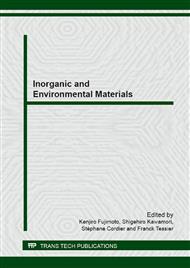p.225
p.229
p.233
p.237
p.243
p.247
p.251
p.256
p.260
Thermoelectric Analysis for a Three-Dimensional Power Generator in Helical
Abstract:
Thermoelectric (TE) phenomenon of a helical generator is numerically analyzed by using the finite-volume method in combination with a three-dimensional finite-element (FE) model. The distributions of temperature and current density are significantly influenced by the generator dimension. The output power of helical generator is also affected by the geometric parameter, such as the helical pitch. The output power and conversion efficiency of helical generator are better than those of straight generator where all the TE elements aligned in a straight line. The helical geometry has a satisfactory potential to be a good TE generator.
Info:
Periodical:
Pages:
260-264
Citation:
Online since:
June 2014
Authors:
Price:
Сopyright:
© 2014 Trans Tech Publications Ltd. All Rights Reserved
Share:
Citation:


